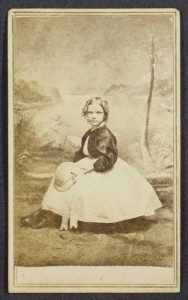By: Chris Sawula, CLIR Postdoctoral Fellow
Hi Chris! Thanks for agreeing to speak to us about your role in the University Libraries. We’re so glad to have you on board.
First off, tell us a little bit about yourself.
I’m originally from Connecticut and moved South for graduate school. I received my PhD in early American History at Emory University. My dissertation was on the origins of laboring identity and community in early Boston between 1737 and 1837. I pursued this project because it allowed me to explore the everyday lives of working Americans and to understand how they conceived of themselves in a rapidly changing urban environment.
What got you interested in the digital humanities?
I had always been interested in various aspects of digital history and using digital methods to ask new questions about historical groups, trends, and events. Early on in my graduate studies, I took a class on the Transatlantic Slave Trade with Dr. David Eltis and saw the extent to which digital tools and techniques could reformulate what we know about history. After that, I had the opportunity to work at the Emory Center for Digital Scholarship first as a researcher and later as a fellow and got hooked.
What were some of the projects you worked on at Emory?
I worked on three major projects at the Emory Center for Digital Scholarship. The first, The Battle of Atlanta: History and Remembrance was a combination essay and mobile app commemorating the 150th anniversary of the Battle of Atlanta. Both the essay and the mobile app allow the user to explore twelve historical sites around Atlanta with interpretive text, photographs, video, and directions.
The second major project I worked on is known as Digital Atlanta. An ongoing project, Digital Atlanta seeks to recreate Atlanta c. 1928 using contemporary maps, fire insurance data, census information, and historical photos. Combining this material with 3D renderings of buildings from the era, Digital Atlanta hopes to capture how it would have been to navigate the city prior to post-war expansion.
Finally, I worked with Professors Hank Klibanoff and Brett Gadsden to build a shareable database for a journalism class on Civil Rights cold cases. I built the database so that students could access primary source documents on these cold cases, conduct research based on these materials, and write pieces of investigative journalism.
What is your role here at UA?
I am the CLIR Postdoctoral Fellow in the A.S. Williams III collection. I’ve been tasked with creating digital projects using the collection’s significant and diverse photographic archive that covers the nineteenth- and twentieth-century South. The postdoctoral fellowship is offered through CLIR (Council on Library and Information Resources) and seeks to help place recent PhDs into academic libraries where they can bring their unique set of skills and experiences. In my case, the University of Alabama was a natural fit due to my experience with digital scholarship and work with historical photographs and I’m very excited to be here.
What makes you excited about the future of libraries and digital scholarship?
I think what excites me most about the future is the growing focus on digital services within the academic library system. Libraries have always offered digital tools and services to their patrons and as interdisciplinary institutions, they are the natural home of digital scholarship. I’ve also been happy to be a part of the trend within academic institutions to promote resources, archives, and projects for use by the general public. As an historian, I think it is critical not only to use digital methods to expand the possibilities for scholarship, but to then make it available for interpretation by a larger audience. Libraries excel at encouraging the exploration of information and I’m happy to help the University of Alabama in this task through digital scholarship.


